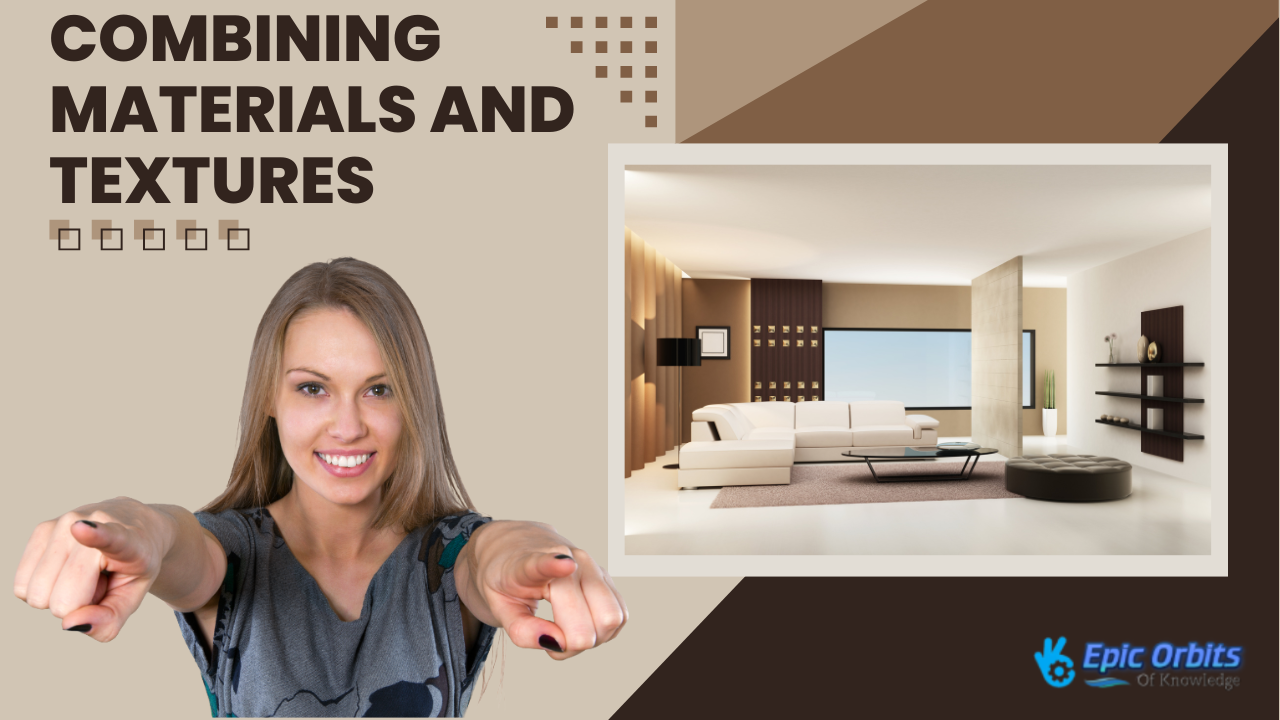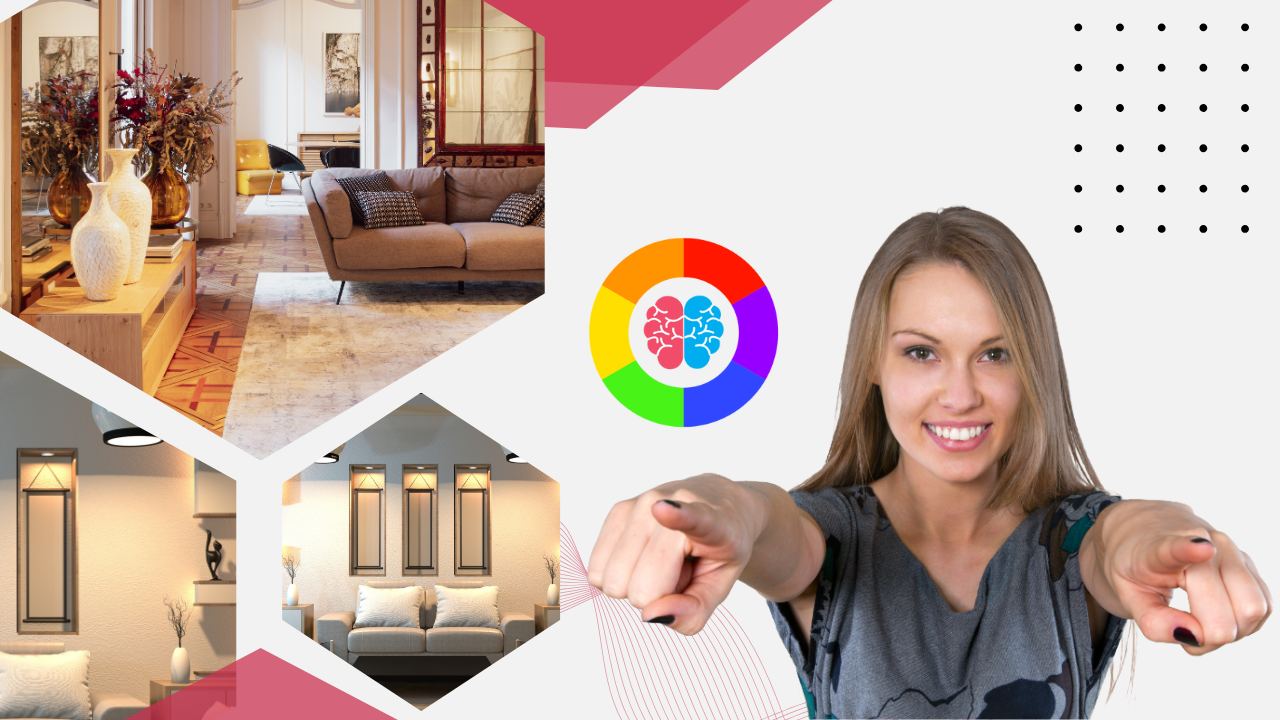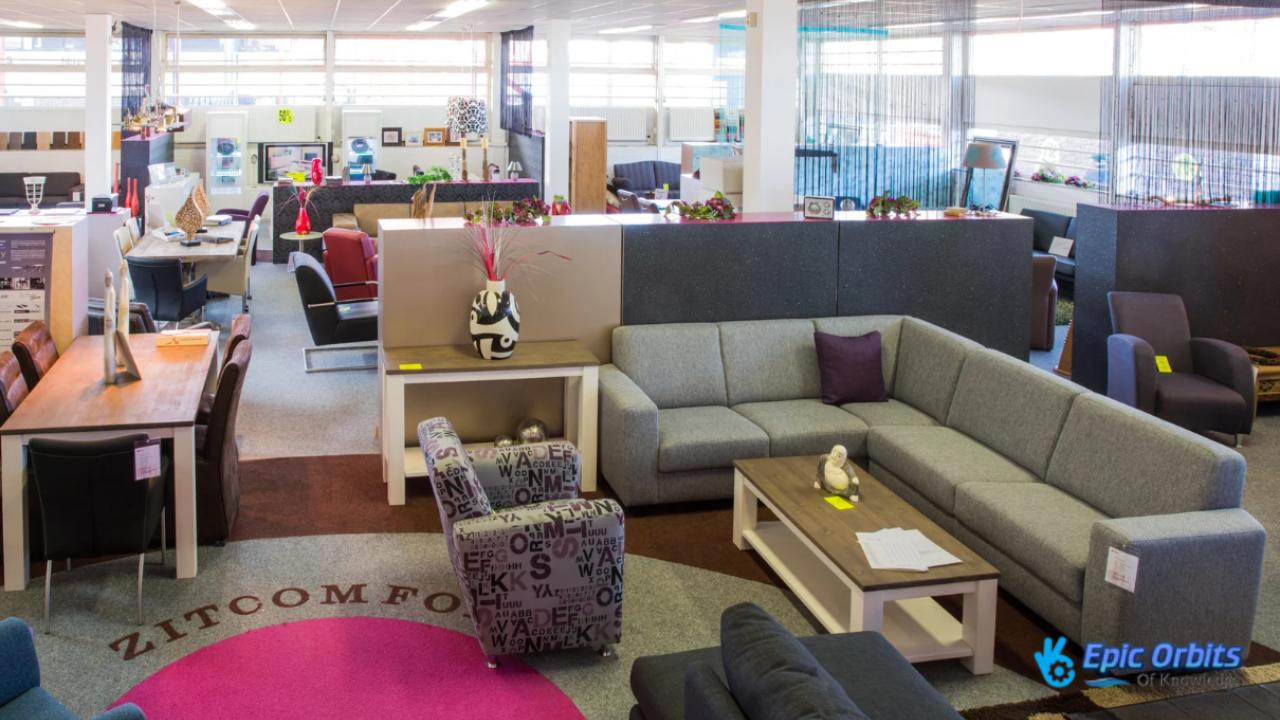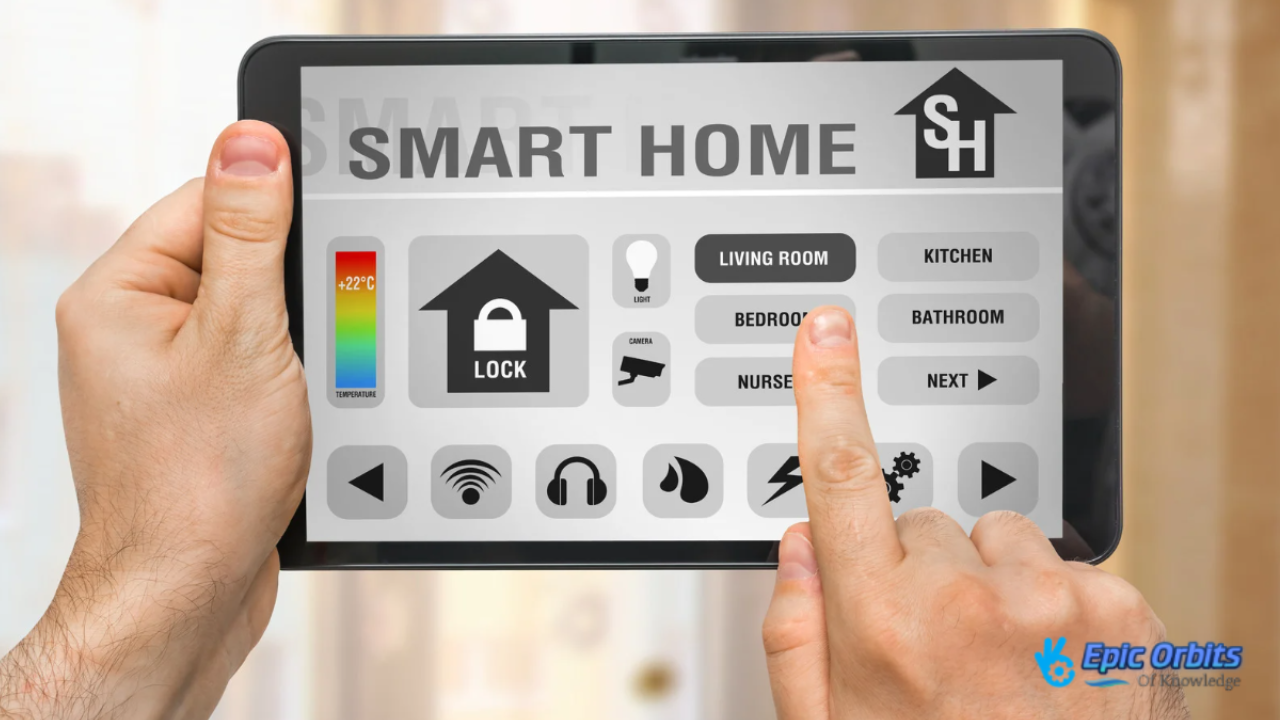Exploring New Trends in Home Interior Design
Elevate your living space with our professional home interior design services. Modern designs and expert advice for your home makeover.

Home interior design can increase your happiness and productivity by up to 20%. Keeping up with the latest interior design trends is crucial when updating your home.
The inside of your house is more than simply a mirror of your taste; it's a haven that ought to be both visually beautiful and useful. Design trends have changed dramatically throughout time to fit evolving tastes and ways of life.
Navigating the realm of interior design requires you to find a balance between embracing modern trends and upholding traditional design ideas. This page will walk you through the newest trends and provide ideas on how expert interior design services may change your home.
The Evolution of Modern Home Interior Design
Over the years, modern interior design has had a wonderful metamorphosis, combining startling beauty with practical use. From the austere “form follows function” to the complex mix of technology and design, our living environments have changed to mirror modern demands and desires.
Early in the 2000s, open-plan kitchens and big TV units became main features, transforming our interaction with our houses. These ideas, along with the use of neutral colors and strong accent walls, prepared the ground for a new phase in interior design. Simplified shapes and statement art pieces rule our homes nowadays, giving each one a distinctively personal and cleverly used place.
✅ The Basis of Contemporary Interior Design
Through a complex tapestry of ancient inspirations, modern interior architecture developed. Emphasizing handmade features and natural materials, the Arts and Crafts Movement launched the change in the late 19th century. This era witnessed a transition from overly complex Victorian designs to simpler and more practical shapes. Early in the 20th century, Art Nouveau brought flowing lines and organic shapes, which helped to simplify homes even as they added a little elegance.
Through its integration of art, workmanship, and technology, the 1920s Bauhaus movement greatly enhanced contemporary interior design. The emphasis turned to functionalism and minimalism, therefore encouraging neat lines and the lack of needless embellishment. Open floor plans, straightforward shapes, and the integration of indoor and outdoor areas distinguish the Mid-Century Modern style, which emerged post-World War II. The open-plan kitchens and large living spaces we see today originated in this age.
Modern interior design has been deeply impacted by many movements and thinkers. Under William Morris, the Arts and Crafts Movement advocated the worth of handwork over mass manufacturing. This phase prepared the foundation for the next moves, stressing utility and excellence.
Founded by Walter Gropius, the Bauhaus school transformed design by advancing the concept that form should follow purpose. It influenced many modernist designs by combining practical usefulness with beauty. Le Corbusier's and Ludwig Mies van der Rohe's International Style emphasized volume over bulk, balance over symmetry, and the abolition of adornment, hence simplifying architecture.
By integrating structures into their surroundings, Frank Lloyd Wright's organic architecture promoted harmony between human living and the natural environment. Finally, with designers like Charles and Ray Eames, the Mid-Century Modern movement provided sleek, utilitarian furniture and open-space ideas, therefore influencing current design trends.
Understanding these basic trends and the ideas of influential thinkers helps us to grasp the development and continuing attractiveness of contemporary interior design.
✅ Characteristics of Contemporary Interior Design
Modern interior design gives simplicity and utility top priority so that areas are both visually beautiful and useful. This style is defined by simple lines and unassuming shapes in which every component has a clear function. We think “form follows function” best captures this idea, as spaces are meant to enable everyday activities without needless embellishment. Open floor designs improve functioning and help tiny areas seem bigger by allowing fluid movement. Simple forms and a little embellishment help create quiet and orderly surroundings with less visual clutter.
The combination of creative materials and technology has significantly influenced modern interior design. Technological developments make smart home elements like automatic lighting and temperature management possible, allowing them to mix well with the architecture without sacrificing aesthetics. Here, designers often use materials like glass, steel, and concrete, which provide durability and a sleek, contemporary look. Furthermore, becoming more important are sustainable materials, which represent growing awareness of environmental influence in design decisions. High-tech appliances and fittings improve the general contemporary appearance and functioning of our homes, therefore improving convenience and style.
✅ Modern Interior Architecture: Influential Styles
Mid-century modern design emerged after World War II, emphasizing simplicity, connection with nature, and utility. Designers prioritized open floor designs, resulting in seamless transitions between indoor and outdoor spaces. Key components turned out to be geometric forms and clean lines. Highly utilized materials reflecting the technical achievements of the time were molded plywood, plastic, and aluminum. Prominent designers such as George Nelson, Eero Saarinen, and Charles and Ray Eames added to this movement with famous furniture designs that best embodied the ideas of the style.
Emphasizing “less is more,” minimalism first took the stage in the late 20th century. Using a neutral color palette, simplified furnishings, and clean spaces, this design emphasizes simplicity and utility. Open layouts and plenty of natural light in minimalist designs help create a feeling of spaciousness. Minimalism meets sustainable design today. Sustainable materials such as recycled aluminum, bamboo, and repurposed wood help minimize environmental impact. Modern houses are environmentally friendly and efficient, as smart home technologies and energy-saving equipment help advance sustainability.
✅ Modern Design's Effects on Current Architectural Styles
Modern architecture deftly combines interior and outdoor areas to create coherent homes. To combine the inside with the surroundings, architects may use open floor designs, big glass doors, and wide windows. Homes with terraces, gardens, and combined patios help to maximize natural light, therefore enhancing general health. This method improves the aesthetic appeal and fosters a connection with nature—something vital for mental wellness. For instance, the big glass walls of mid-century modern houses help blur boundaries between the interior and outdoors.
Including smart home technology transforms interior design. These days, modern houses have integrated systems run by cellphones or voice commands that manage lighting, heating, security, and entertainment. These technologies improve security, energy economy, and convenience. Smart thermostats, for example, change heating and cooling depending on occupancy patterns, therefore lowering energy use. Furthermore, available from smart lighting systems are configurable settings like scheduled scheduling and mood-specific illumination. Interior design will stress more and more flexibility and creativity as technology develops so that areas are not only attractive but also very useful.
Top Interior Design Trends Transforming Homes Today
The realm of luxury interior design is about how to reconcile sustainability, customization, and modern invention. From architects to real estate developers, today's home design specialists are integrating high-end materials, smart home technology, and classic aesthetics into their projects as many consumers search for polished yet comfortable places.
The house interior design trends of this year stress not only beauty but also practicality, environmental awareness, and immersive experiences. From biophilic components to well-chosen minimalism and antique inspirations, every trend shows a move toward homes that enhance daily life by telling a narrative.
Staying ahead for those influencing the next wave of luxury home trends means knowing how these components—from the choice of sustainable finishes to the integration of intelligent automation to the development of custom features like sophisticated wine storage solutions—translate into practical use.
Let's investigate how the most powerful interior design trends of 2025 are altering contemporary life.
✅ Green and Sustainable Design
Sustainability has grown to be a key component in the house industry as interior designers and homeowners become more ecologically concerned. Luxury houses in 2025 are progressively using technology and materials that lower environmental impact without sacrificing design or quality, such as
- Sustainable Materials and Finishes: Offering both durability and environmental friendliness, bamboo flooring and recycled metals are top alternatives for contemporary interior design. High-end houses are also choosing organic materials and non-toxic, low-VOC paints to help guarantee better interior surroundings.
- Smart Systems' Energy Efficiency: In upmarket homes, solar-integrated design, passive heating and cooling systems, and energy-efficient equipment are becoming commonplace. While increasing comfort, advanced smart home systems control temperature and lighting to reduce energy consumption.
- Biodegradable and Locally Sourced Elements: Reducing carbon footprints by supporting artisan work, the fight for sustainability reaches to locally created furniture, stonework, and ceramics.
By 2025, sustainability will be about designing places as sophisticated as they are ecologically conscious.
✅ Personalized Minimalism: The Move toward Customized Simplicity
Though minimalism has traditionally been connected with austere, monochrome environments, the home interior design trends of 2025 embrace a more carefully chosen, individual approach. Ironically, minimalism is becoming associated with opulent life more and more. This development substitutes warmth and uniqueness for the cold, impersonal sense of classic minimalism. For instance:
- Layered Textures and Statement Pieces: Many designers are using rich textures—woven textiles, matte finishes, and natural stone surfaces—to give depth and warmth rather than cleanliness within. To represent the homeowner's style, minimalist rooms now include one-of-a-kind furniture pieces, sculptural lighting, or well-chosen art collections.
- Designed Neutral Palettes: Although neutral colors are still a mainstay of contemporary interior design, they are becoming more varied, including soft terracotta hues, subdued greens, and earthy beiges.
- Function-Driven Luxury: Though functional solutions are becoming more and more crucial, cleaned-up areas remain vital. To create small areas that seem lived-in rather than barren, designers are using built-in storage options, multipurpose furniture, and architectural connections.
✅ Biophilic Design: Bringing Nature Inside
Another important influence on present interior design trends is a strong connection to nature; biophilic design takes the stage. This idea combines smart layouts, organic materials, and natural features to provide inside spaces that support sustainability, peace, and well-being. These entail:
- Living Walls and Inside Gardens—Integrated greenery is becoming a more important architectural element than just decoration. While they improve air quality, vertical plant walls, potted trees, and hydroponic herb gardens add life to homes.
- Statement walls, counters, and furnishings are made from raw, organic materials such as travertine, salvaged wood, and unpolished marble, therefore strengthening a link to nature.
- Floor-to-ceiling windows, skylights, and glass walls let sunshine pour into rooms, therefore producing bright, open surroundings that seem large and welcoming.
Biophilic design turns houses into havens of peace and easy luxury by harmonizing natural components with modern aesthetics.
✅ Integration of Smart Homes for Perfect Luxurious Living
Luxury interior design is still being shaped by technology; smart home integration in 2025 will improve aesthetics as well as convenience. These days, homeowners demand smart automation that fits naturally into the architecture of their living areas, such as
- Advanced smart lighting systems now automatically change brightness and color temperature over the day, therefore matching natural circadian cycles. Climate control guided by artificial intelligence guarantees ideal comfort and energy economy.
- Invisible Technology and Underlying Characteristics— Smart elements are becoming more subdued in order to maintain current home design aesthetics. Convenience without sacrificing the general style comes from flush-mounted control panels, built-in projectors, and hidden speakers.
- Voice & App-Controlled Systems: High-end houses are adopting simple, understated technology, from smart glass barriers that change from translucent to opaque to fully automated kitchens and security systems.
By 2025, smart home integration is about creating an aesthetically pleasing, energy-efficient, intuitive home environment.
✅ Vintage and Art Deco Revival
With Art Deco, Mid-Century Modern, and classic European influences firmly returning, a rebirth of vintage aesthetics is also influencing home interior design ideas for 2025. With an eye toward rooms that seem timeless but modern, the emphasis is on combining classic beauty with modern elegance. Current patterns comprise:
- Statement Patterns and Strong Colors—Rich jewel tones, geometric patterns, and detailed workmanship are returning because they accentuate inside designs.
- Designers are fusing classic materials with a modern twist by matching brass accents, marble surfaces, and velvet upholstery with contemporary architectural lines to blend old and new.
- From curving furniture forms to elaborate millwork and decorative moldings, vintage-inspired environments stress workmanship and expertise in sculptural and ornamental design.
Combining modern sensibilities with historical luxury lets houses feel exquisitely nostalgic while still keeping a cutting-edge look.
✅ The luxury of custom wine storage in 2025 design
Custom wine storage is becoming more and more important as luxury houses become more individualized and experience-driven. Modern interior design depends on this pillar element. These days, integrated wine cellars and display systems are regarded as fundamental design features improving the value and appearance of a house.
- Perfect Integration with Interior Design Wine storage is transcending conventional cellars and becoming a visual focal point in kitchens, dining rooms, and entertainment spaces. Floor-to-ceiling displays include glass enclosures and accent lighting that transform wine collections into pieces of art.
- Custom metal and wood wine racking systems are becoming popular among high-end builders and designers.
- An Interpretive Guide on Luxury and Lifestyle An atmosphere supporting luxury home trends of amplified entertaining and lifestyle-centric design depends much on a well-designed wine wall or display.
Certainly, adding a bespoke wine cellar will greatly improve the attractiveness of a luxury house. Valued at $3.1 billion in 2024, the worldwide wine cellar market is predicted to expand at a CAGR of about 5.6% from 2025 to 2034, therefore indicating a growing need for advanced wine storage options.
Color Psychology in Home Interior Design

Your attitude and general impression of the area of your house may be much influenced by the colors you decide upon for the interior design. Color psychology is thus a very important consideration in interior design, as various colors may arouse different emotional reactions.
Usually, colors fall into warm and cold groups. Warm hues like reds, oranges, and yellows are perfect for social spaces like living rooms, as they usually inspire and excite. Conversely, cold hues like blues, greens, and purples—often used in bedrooms—promote tranquility and rest.
Examining the color temperature and how it influences the apparent size and feel of a space can help you to design a harmonic color palette. A well-designed palette will run over your house to provide a coherent appearance. It's also important to take natural light's influence on color appearance in various rooms into account when choosing colors.
Understanding color psychology and using its ideas can help you to improve the atmosphere and utility of your house by means of interior design.
Functional Space Planning and Design
The foundation of a well-designed house is good space planning, which affects both appearance and utility. It's about designing a plan that not only looks fantastic but also improves your space's livability.
- Using clever design to maximize small spaces: Maximizing limited areas calls for clever design ideas like strategic layout planning and multifarious furnishings. One may create a roomier impression by using wall-mounted shelving and storage ottomans. The secret is to maximize every inch at hand without sacrificing comfort or flair.
- Establishing Flow between Rooms: A harmonic interior design depends on smooth movement between spaces. This entails thinking through furniture layout and traffic patterns to guarantee a seamless transition from one area to another. This will help you to establish consistency and visual attractiveness all over your house.
Home Interior Design: Furniture Selection and Placement

Understanding the ideas of furniture selection and arrangement can help one to create a harmonic and welcoming home. Good interior design depends on well-chosen furniture placed strategically.
Choosing furniture that accentuates your style of home design is quite vital. A sleek couch or a simple coffee table would fit a modern style and call for clean lines and little embellishment. Typical modern furniture designs exhibit exposed legs and simple lines that provide a bright and airy impression.
When selecting furniture, one must strike a balance between personal taste and pragmatic factors like comfort, lifetime, and upkeep. For instance, a stylish sectional couch can serve as both a comfortable seating arrangement and a focal point. To guarantee a harmonic and useful space, consider the size and proportion of furniture with respect to the room.
Proper placement of strategic furniture may maximize space usefulness, flow, and discussion. Professional designers evaluate elements such as the function of the area, traffic flow, and desired mood when choosing furniture for their whole design concept.
Home Interior Design: Lighting as a Design Objective
Lighting is a fundamental component of interior design and may help make your house more livable and beautiful. It not only brings attention to architectural details but also helps to define the atmosphere and highlight areas.
✅ Natural vs. Artificial Lighting Solutions
Your two main choices for lighting your house are artificial and natural ones. Along with being energy-efficient, natural light improves happiness and health. It is not always accessible, however; hence, artificial illumination is a required supplement. Smart lighting systems and LED bulbs are two examples of artificial lighting solutions that provide adaptability and fit for several times of day and activities.
Combining natural and synthetic lighting sources will provide a harmonic and useful lighting arrangement. For example, while in the evening layered lighting may provide the necessary mood, during the day optimizing natural light via windows and skylights can help to lower the need for artificial lighting.
✅ Developing Ambiance with Strategic Lighting
Strategic lighting is the layered effect created by employing ambient, task, and accent lighting—variations of which While task lighting concentrates on certain locations like reading nooks, ambient lighting provides general illumination, and accent lighting accentuates architectural details or ornamental components. Depending on your demands, balancing these kinds can help you to create the intended mood, thus transforming your living room or any other place into either colorful, intimate, or large.
- The general vibe of a space is created by ambient lighting.
- Particularly in rooms used for reading or cooking, task lighting is very essential for utility.
- Accent lighting showcases the finest aspects of your home design and adds drama.
Furthermore, the impression of your room may be much changed by the proper light intensity and temperature. While cold white light could excite a place, warm white light can foster a comfortable environment.
Home Interior Design: Combining Materials and Textures
Understanding how to properly mix many textures and materials into your interior design will help you to create a rich and layered atmosphere. This method not only improves the look of your house but also activates the senses, therefore increasing its welcoming quality.
One effective approach to give your inside areas visual appeal and depth is mixing many textures. One may create a dynamic and interesting environment by mixing coarser textures like wood and woven fibers with smooth surfaces like glass and metal. This combination of textures may also assist in balancing the visual weight of many components in a space.
Interior design trends nowadays emphasize the use of creative synthetic materials as well as natural aspects. Popular for their authenticity and warmth are materials such as organic fabrics, natural stone, and recycled wood. Concurrent developments in synthetic materials have made them more flexible and environmentally friendly, therefore providing a great spectrum of design options. When choosing materials, take sustainability and how they add to the general mood of your area into account along with their visual attractiveness.
The Role of Professional Home Interior Design Services

Creating visually beautiful and useful places depends mostly on professional interior designers. Their degree of knowledge will help your living environment go from average to outstanding.
One of the many advantages of working with a professional interior designer is access to trade resources inaccessible to the general public. They guarantee that the design is not only gorgeous but also practical and practicable, thereby helping you to prevent expensive errors.
Furthermore, knowing your wants, tastes, and lifestyle requirements can help designers to create a coherent vision for your area.
Usually starting with an initial meeting when the designer notes your needs and preferences, the interior design process starts. The growth of a design idea comes next.
Designers carefully assist you throughout the process to make sure the end product satisfies your expectations. Professional designers handle every stage, including style and execution.
Home Interior Design: Affordable Design Transformations for Budget
A beautiful house on a budget is possible with smart interior design ideas. You may greatly improve your living area without overpaying by making a few calculated improvements.
Painting walls, changing the lighting, and moving furnishings are among the most efficient strategies you can use to make over your area. With little financial outlay, these high-impact modifications may provide the best visual effect. For example, a new coat of paint may totally change the atmosphere of a place.
Although do-it-yourself tasks might be reasonably priced, sometimes hiring a professional interior designer is well worth the expense. Professionals can help you design coherently, secure trade discounts, and prevent expensive blunders. For your particular job, you must balance the value of professional services against the advantages of doing it yourself.
| Design Element | DIY Cost | Professional Cost |
| Painting | $200-$500 | $500-$1,000 |
| Lighting Update | $50-$200 | $200-$500 |
| Furniture Rearrangement | $0 | $100-$300 |
Technology and Smart Home Integration

Combining interior design with technology is transforming our houses' way of life. Interior designers are deftly blending technology into their designs as smart home appliances proliferate to improve both utility and visual appeal.
Designers are using elegant, simple gadgets that fit the décor of the house to combine technology without sacrificing flair. Smart lighting solutions, for example, may be set to change depending on the time of day and remotely controlled, therefore improving ambiance and energy economy.
Concealed plugs and smartly crafted smart home hubs are among the hidden technology solutions that keep areas clean and uncluttered, therefore guaranteeing that technology improves rather than compromises the interior design.
Future-proofing your interior design means choosing the technologies you include in your house with knowledge. This involves choosing modular components that can be readily changed or upgraded as new technologies develop, therefore preventing the need for regular restorations.
Smart home technology may be enjoyed by homeowners who strike a balance between modern technologies and classic design components, thereby preserving a relevant and elegant living environment throughout time.
Client success stories: transforming environments
The potential of interior design to totally change a place from a simple space into a cozy and welcoming living environment defines its strength. Expert interior designers have the knowledge to bring about this metamorphosis, thus profoundly affecting homeowners' lives.
✅ Before and After: Living Room Renovations
Looking at before-and-after changes is one of the most convincing approaches to grasp the influence of interior design. For example, an old and messy living room may be transformed into a sleek, contemporary area that exactly captures the homeowner's taste.
| Features | Before | After |
| Color Scheme | Dark, muted tones | Bright, airy palette |
| Furniture | Outdated, mismatched pieces | Modern, cohesive design |
| Lighting | Insufficient, harsh lighting | Layered, ambient lighting |
✅ Client Testimonials and Experiences
Still, don't rely solely on our word for it. Interior design has personally shown our clients the transforming ability. As pleased customer Shaniece pointed out:
“This was my second project collaborating with Havenly using the same designer. She knows more than we even know about what we enjoy. The procedure was excellent; I would not alter one thing from start to finish. The designs and the objects selected fit exactly my concept in terms of degree of detail. I will always handle my design requirements with Havenly. – Shaniece
Stories like Shaniece's highlight the need to collaborate with a skilled interior designer to create a beautiful and useful living environment.
Conclusion
Your interior design path requires you to strike a balance between your own flair and ageless design ideas. The main interior design trends and ideas covered in this article will enable you to construct a practical and visually beautiful room. Your living experience will be improved by including multifunctional areas, biophilic components, and sustainable design. To realize your concept, think about consulting an experienced interior designer. Thoughtful design not only enhances the atmosphere of your house but also changes with time to meet your evolving demands, therefore enhancing your quality of living.



























